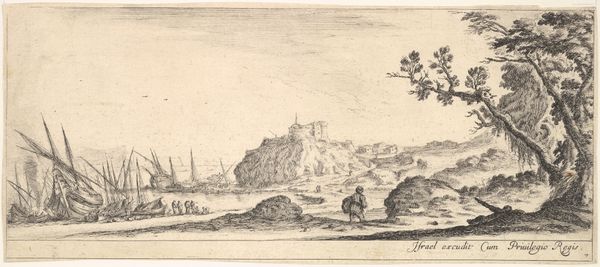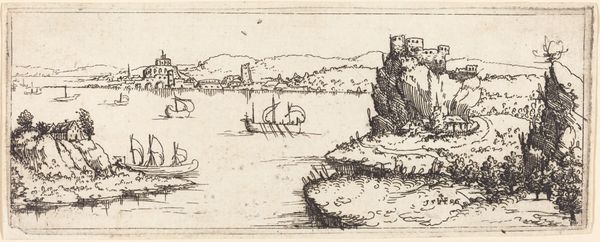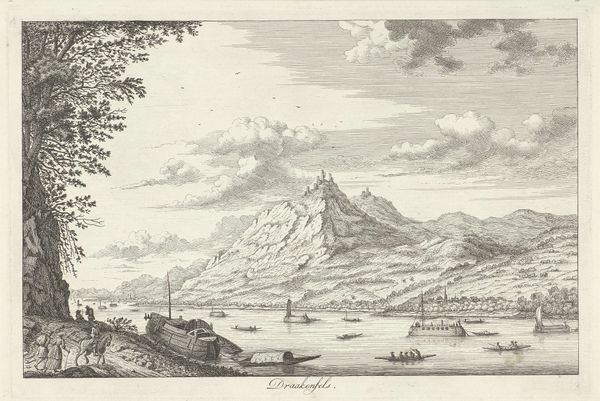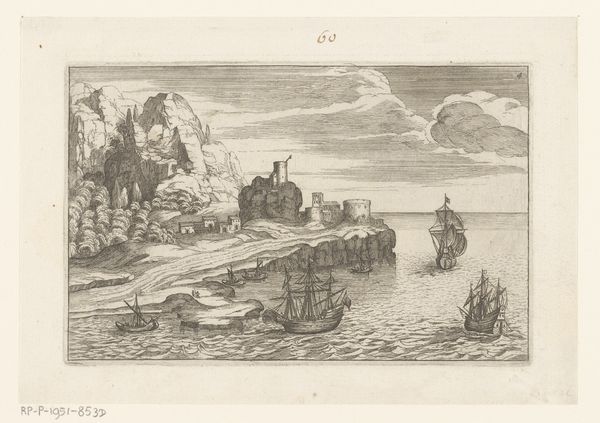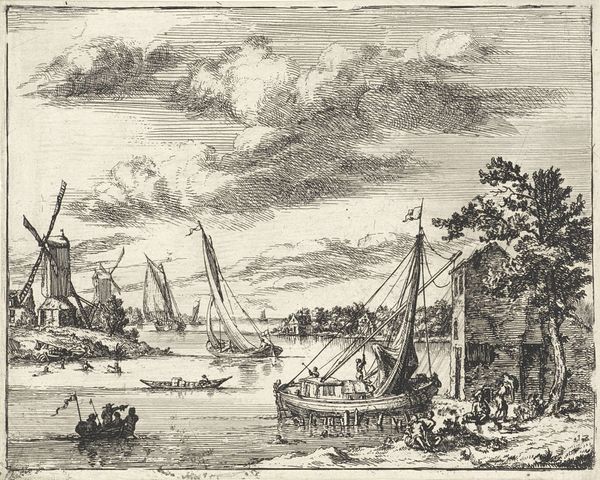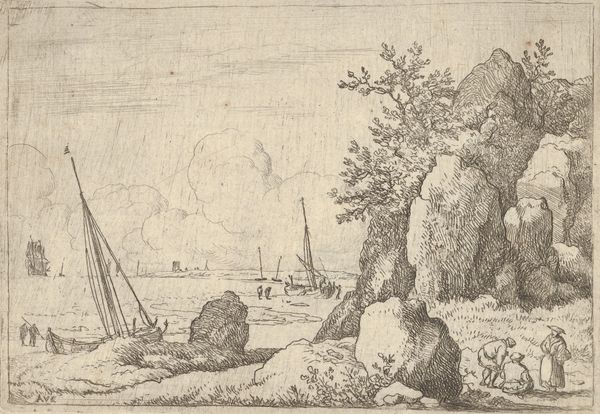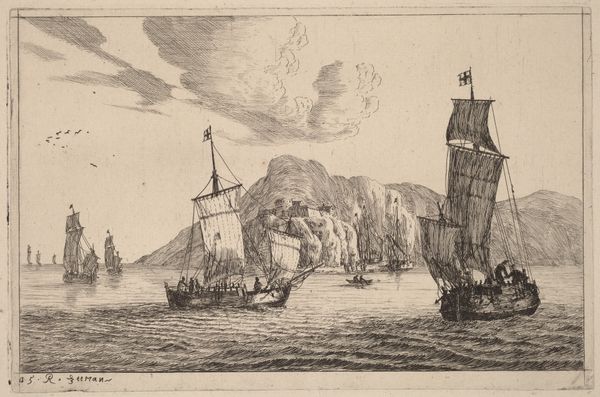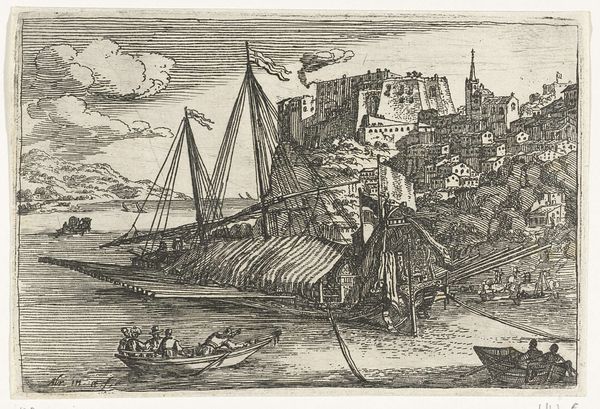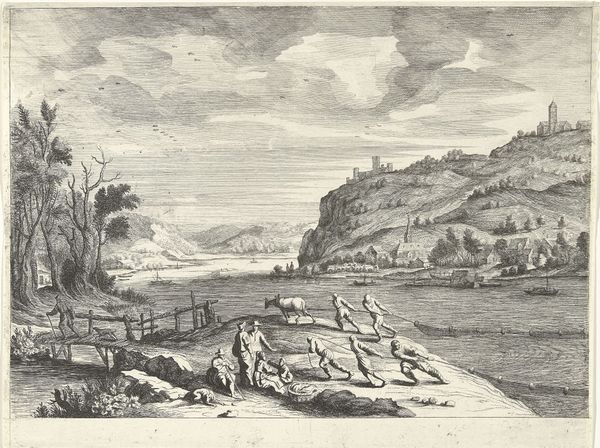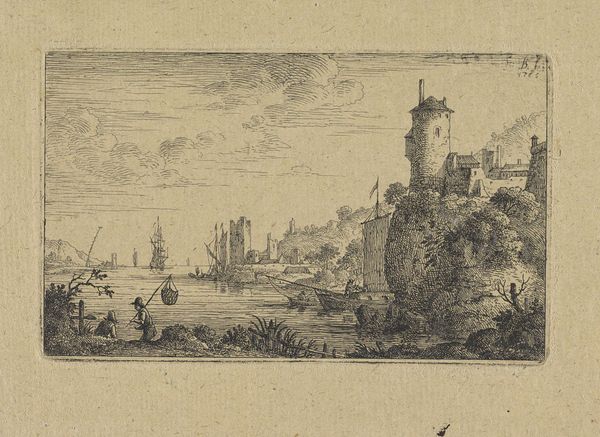
drawing, print, etching, ink, pen
#
drawing
#
narrative-art
#
baroque
#
dutch-golden-age
# print
#
pen illustration
#
etching
#
landscape
#
ink
#
pen-ink sketch
#
pen
#
cityscape
Dimensions: height 87 mm, width 120 mm
Copyright: Rijks Museum: Open Domain
Editor: This is "River Landscape with a Rider on the Bank," a pen, ink, and etching piece by Bonaventura Peeters I, created sometime between 1624 and 1652. The detailed linework really captures the stillness of the water and the busyness of the scene. What strikes you about this artwork? Curator: Considering this work through a materialist lens, I see an etching made accessible through printmaking. The materials -- ink, paper, etching tools -- and the labour invested reveal the intention to distribute imagery. Notice the scene isn’t of nobility; it shows merchants or common people utilizing the river for transport and trade. How does the proliferation of prints like this challenge traditional notions of artistic value? Editor: That's fascinating! I hadn’t considered the "accessibility" aspect. So, you are saying this etching challenges the idea of unique artworks intended solely for the elite? Curator: Precisely. This becomes a commodity. The act of creation itself, the labour, the access to materials, all point to a shift in the art world. We move away from solely celebrating unique works and examine the socio-economic implications of artistic reproduction. What kind of markets do you think are built because of art forms like these? Editor: It suggests a growing market for art among the merchant class. Maybe even a budding art market influencing tastes beyond the traditional aristocratic circles? Curator: Exactly. It points to a world where art becomes intertwined with trade, accessibility, and broader societal consumption. And through the production, distribution, and consumption of material, art becomes entangled with wider economic forces. This is precisely why thinking critically about artistic process is very insightful. Editor: I see your point! Looking at art with production and materials in mind provides such an enriched viewpoint. Thanks for shedding light on that. Curator: And thank you. Exploring it together is what enlivens art history!
Comments
No comments
Be the first to comment and join the conversation on the ultimate creative platform.

